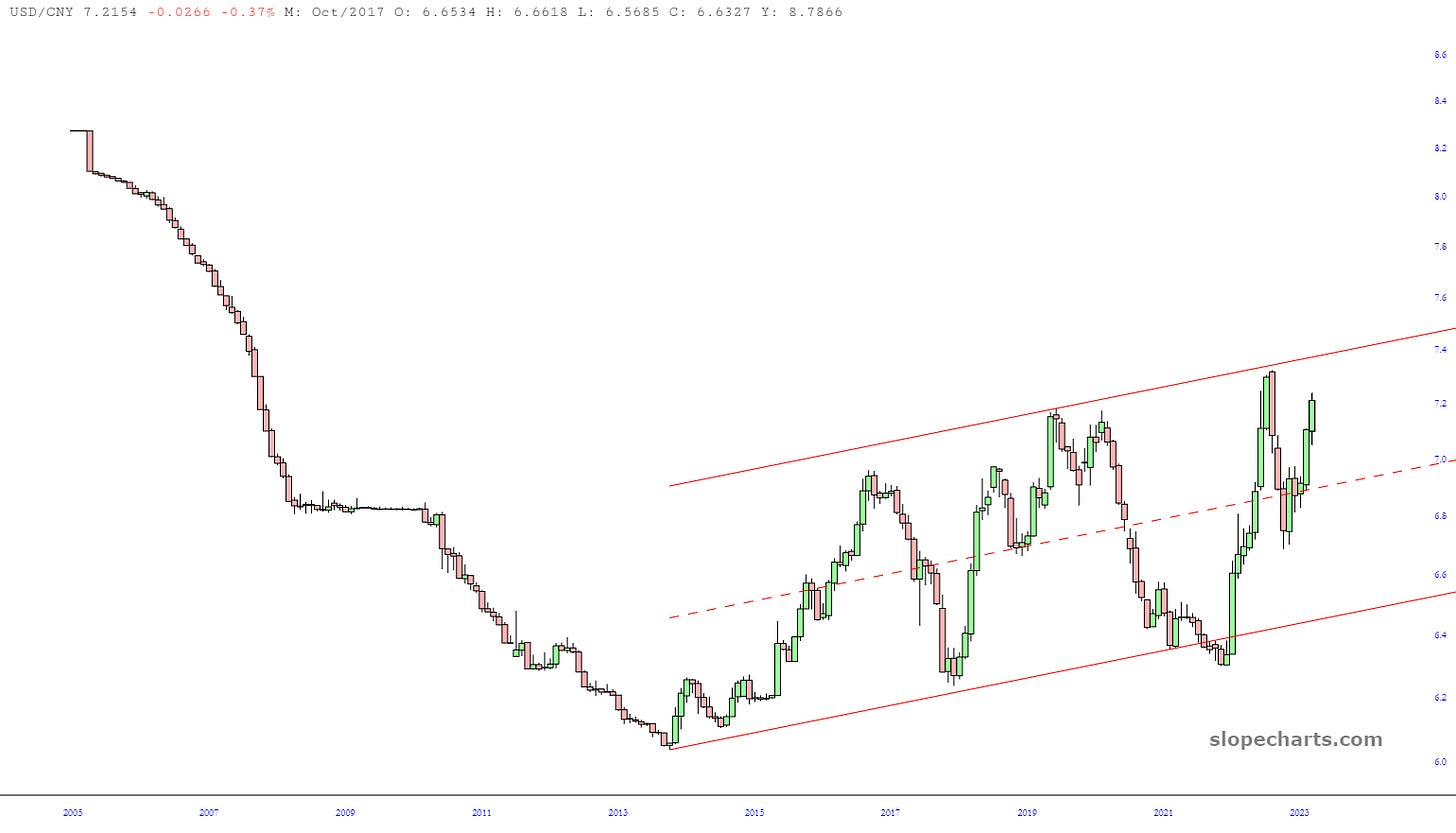A bear market signal triggered in China:
China Bans ‘Negative’ Finance Writers as Stock Market Sinks
Wu Xiaobo and two other writers who weren’t fully named “attacked and undermined” Chinese policy and spread “negative and harmful information,” according to a statement by Sina Corp.’s Weibo on Monday.
Wu has 4.7 million followers on the Twitter-like social media platform, making him one of China’s most influential writers about finance. He regularly writes for Caixin Global and has published bestselling books on Tencent Holdings Ltd. and China’s economic transformation. His recent posts have been deleted, making it unclear what triggered the ban.
Context was the recent coverage of youth unemployment, covered here:
China Youth Unemployment High and Rising
JUN 25

China’s coronavirus lockdowns weren’t good for the economy, but nearly everyone who had an optimistic view of “reopening” forgot that China reopened in the summer of 2020.
The charts show not only is further downside a threat, but an epic bear market could be unleashed if the market weakens even a little bit.
The main index Shanghai Composite ASHR -0.15%↓ is about 10 percent off its 52-week low. It’s about 25 percent down to the blue support line.
If it weren’t for the long-term trend line, it would look like a 50/50 market with a bullish breakout about 35 percent away. With the government banning the social media account of a bearish (or realistic?) finance reporter, the bearish interpretation carries more weight here.
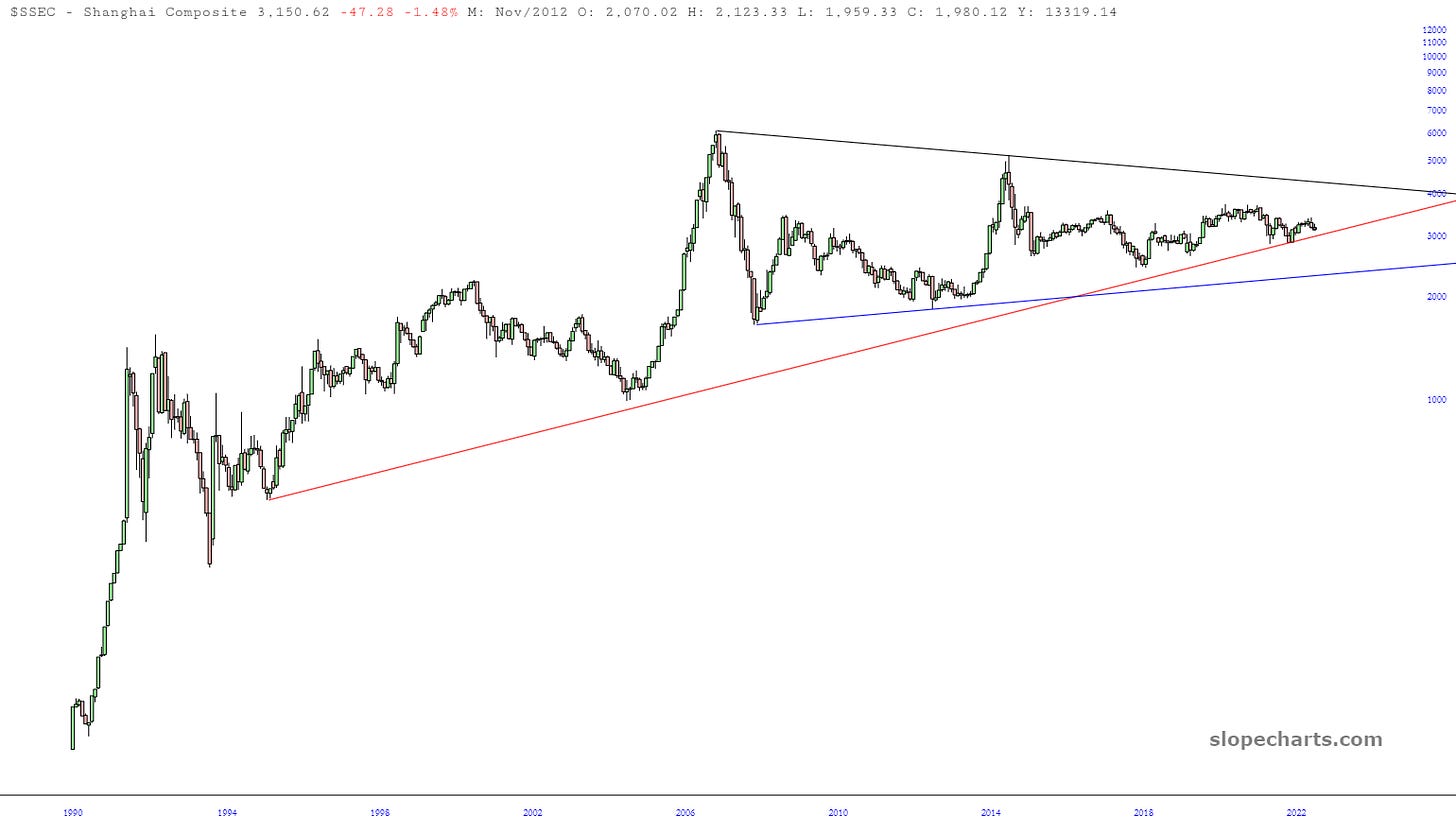
China’s version of the Nasdaq has double-top potential. Again, I could see a monster cup-and-handle base if Chinext CNXT -0.21%↓ went up and through the high. The 3-year inverted cup-and-handle seems more valid right here.
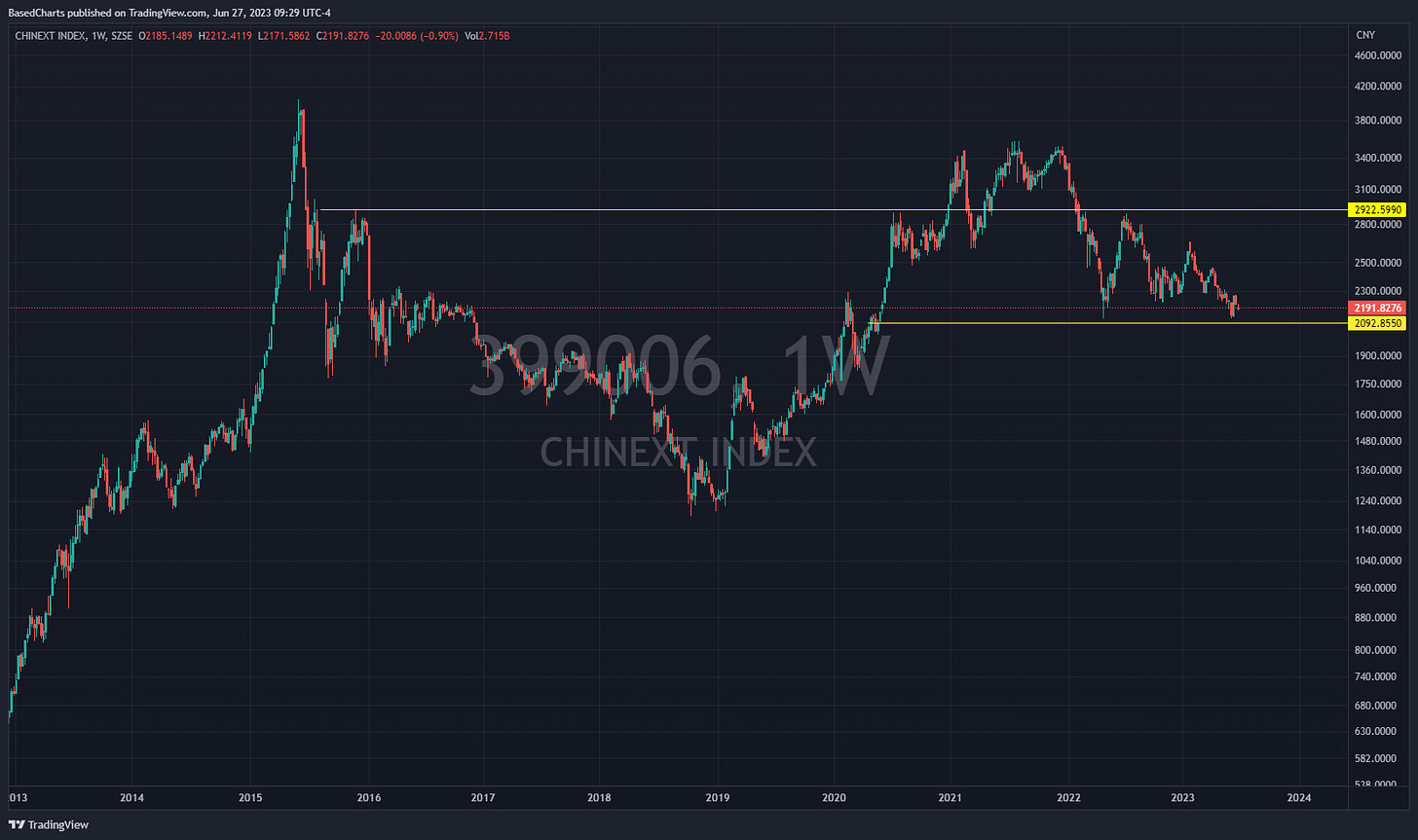
Two big stocks I watch. Blue chip Moutai and China’s Tesla (battery maker CATL). Moutai is coming up on 20-year support and sporting a potential reversal patter. CATL has the same pattern.
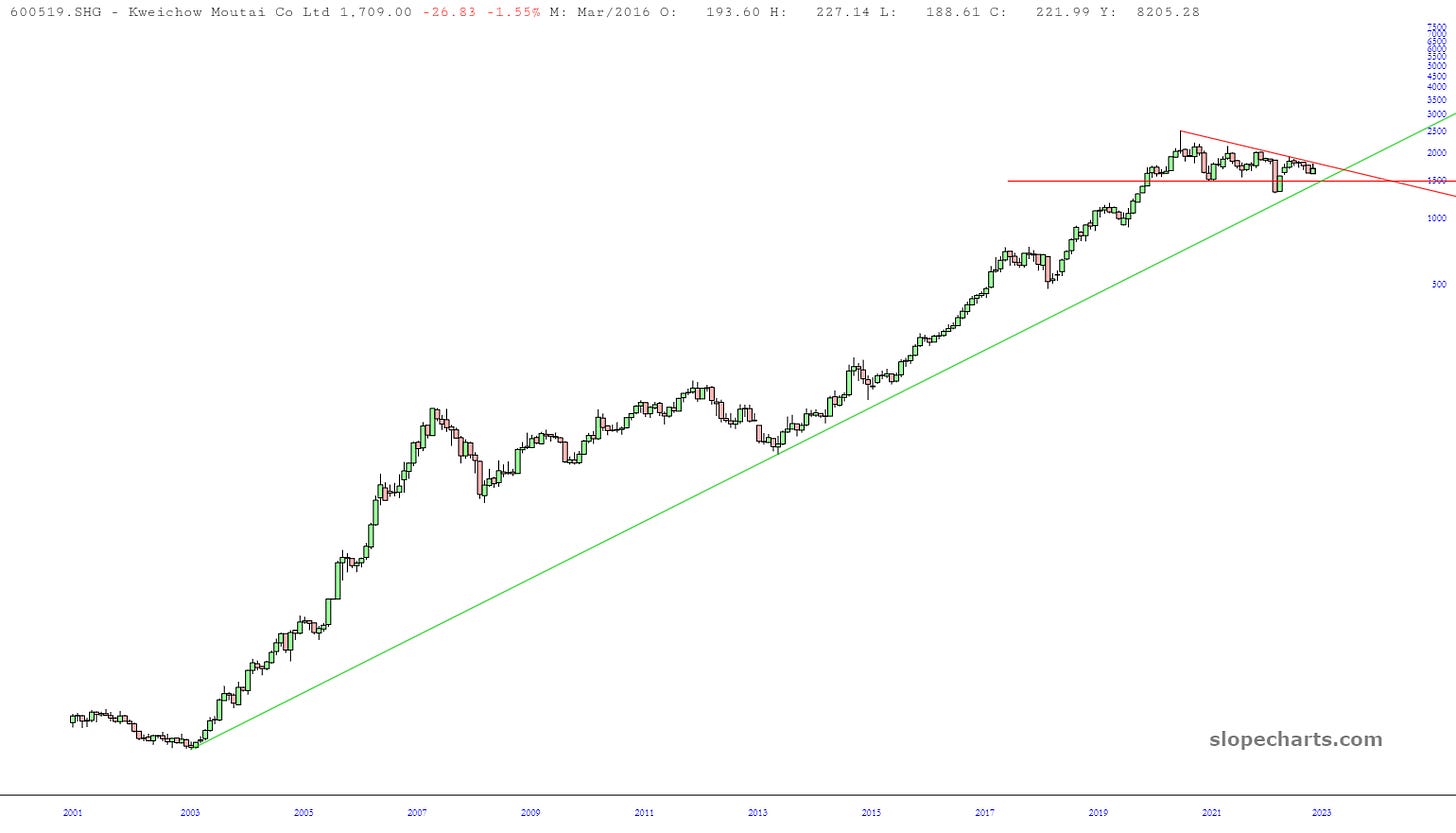
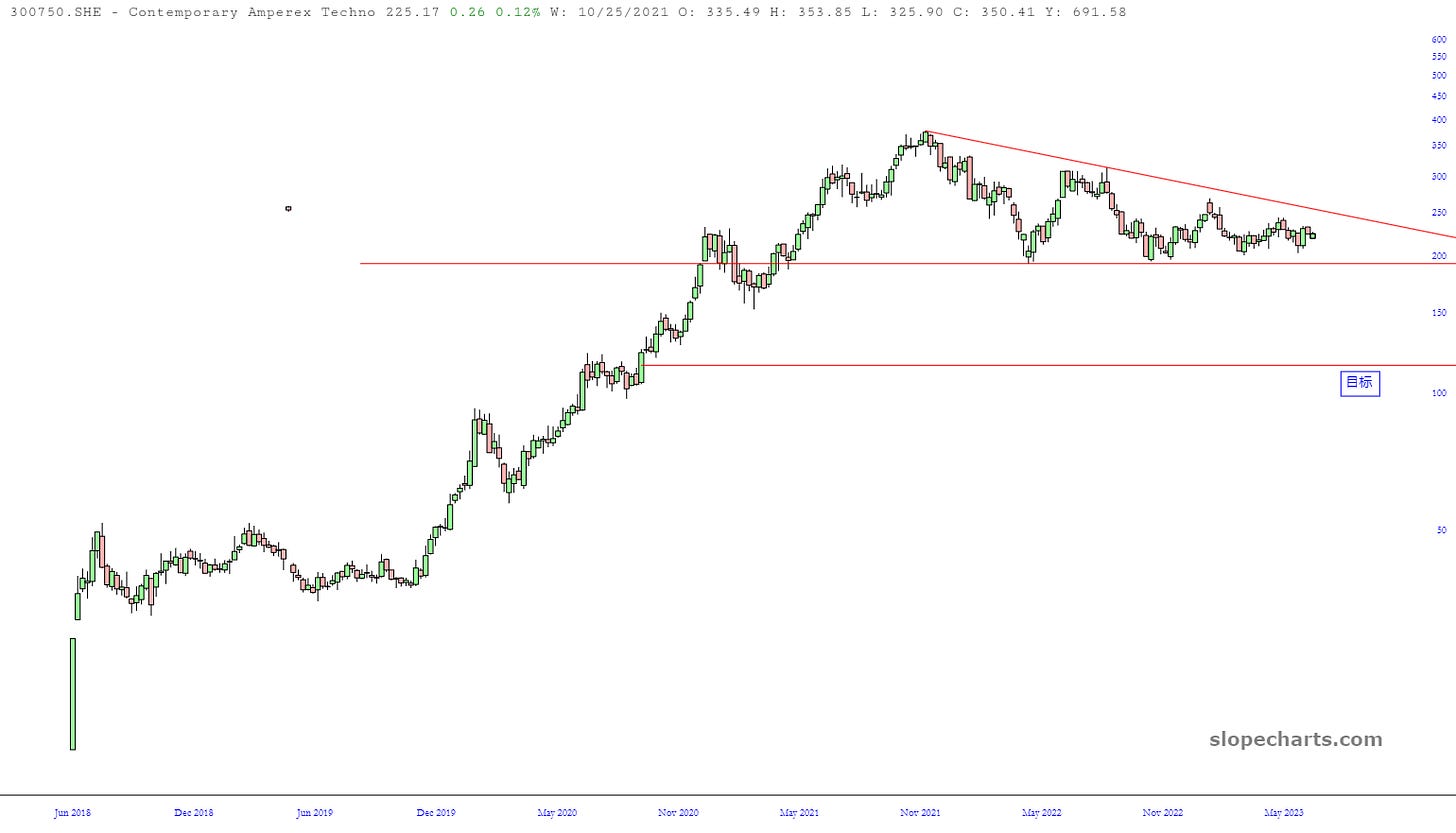
Bear market bottoms usually form in the fog of panic and negativity. Both of these stocks fell 50 percent off their high. All of the patterns have bullish possibilities. The Shanghai market peaked in 2007, Chinext in 2015. Enough time has passed, enough losses incurred such that a bullish resolution wouldn’t be a shock. There’s also fairly widespread negativity among investors.
The government isn’t acting as if there’s a dirt-cheap buying opportunity. If the market is fundamentally strong, a wave of Negative Nellies could be just what the market needs for a panic flush that terminates a bear market. Instead, it looks more like a government worried about the long-term. From the Bloomberg article linked above:
Domestic travel spending during the recent holiday for the dragon-boat festival was lower than pre-pandemic levels, according to official data released this weekend. Home sales figures are below the level in previous years, while estimates for June car sales showed a drop from a year ago.
China’s dollar short is also growing: China steps in to stem yuan slide, shore up confidence
China’s monetary authorities took forceful action against a sliding currency for the first time in nearly eight months on Tuesday, with the country’s state banks acting to put a floor under the yuan even as officials pledged more stimulus for the flagging economy.
China has been the source of weakness the past decade. It has come close to recession and serious currency devaluation several times, only to be bailed out by global central banks and the Federal Reserve. The bull scenario for China involves avoiding calamity during the dollar bull market. Once the greenback reverses, pressure on China and the world economy will reverse. The bear scenario involves China digging a hole it can’t escape from.
“There is weariness that the yuan weakness may have got to the point where the currency weakness could affect confidence that in turn fuels currency weakness, and there is a need to kind of make sure that we don’t spiral into that kind of a situation,” said Moh Siong Sim, a currency strategist at Bank of Singapore.
“They are sending more signals now they’re uncomfortable… they would like to slow the yuan weakness.”
Currency intervention works in the short-term. It works because markets fear the power of central banks. Until they don’t. Thailand sold dollars to defend the baht and then came the moment the market decided it didn’t think Thailand had enough dollars.
Only a month ago I posted this:
10……….9……….8………7………6………5………4………
·
MAY 20
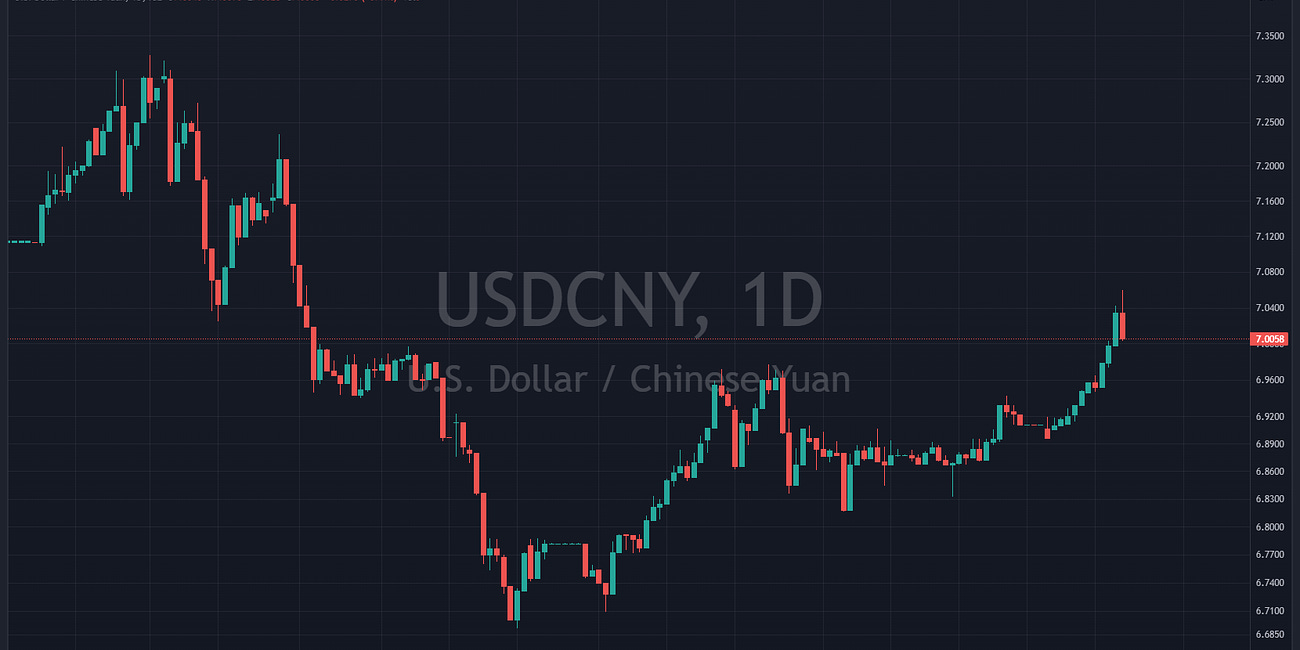
…One-year dollar/yuan swap eased to a low of -2,180 points, the lowest level since Nov 2022, and effectively pushing one-year yuan to 6.82 per dollar.
The forwards are down 1.5 percent at 6.94 yuan per dollar. . Not a huge drop yet and meaningless if banks covered, but did they? Those positions are down 5 percent versus spot and they will eventually trend towards spot over time. If the dollar continues rallying…
At least today was a better spot for shorting dollars:
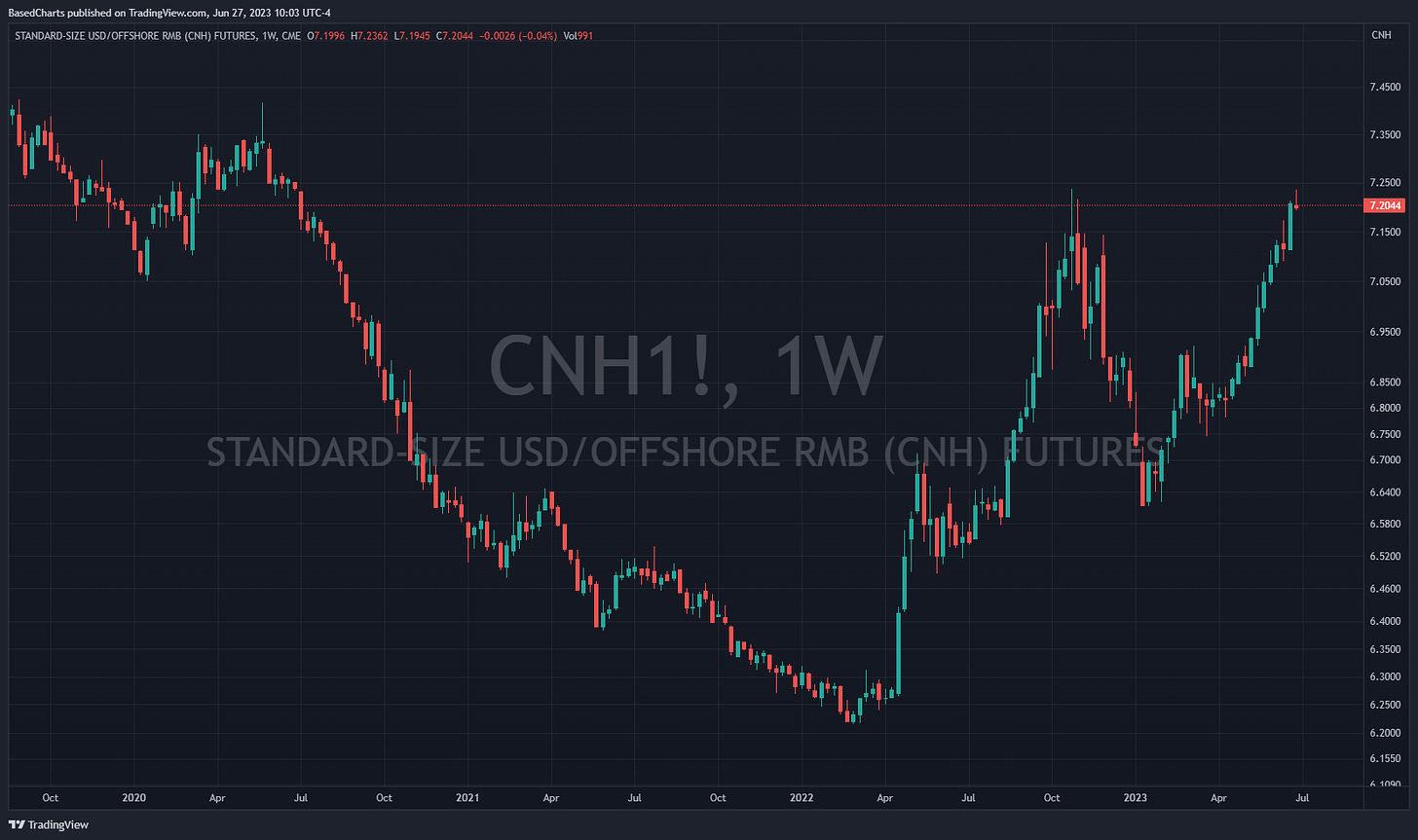
You can’t see the May intervention because there’s no evidence of it in the weekly chart. If CNH clears 7.25, this intervention might go invisible too.
The stakes are rising because USDCNY is approaching crisis levels.
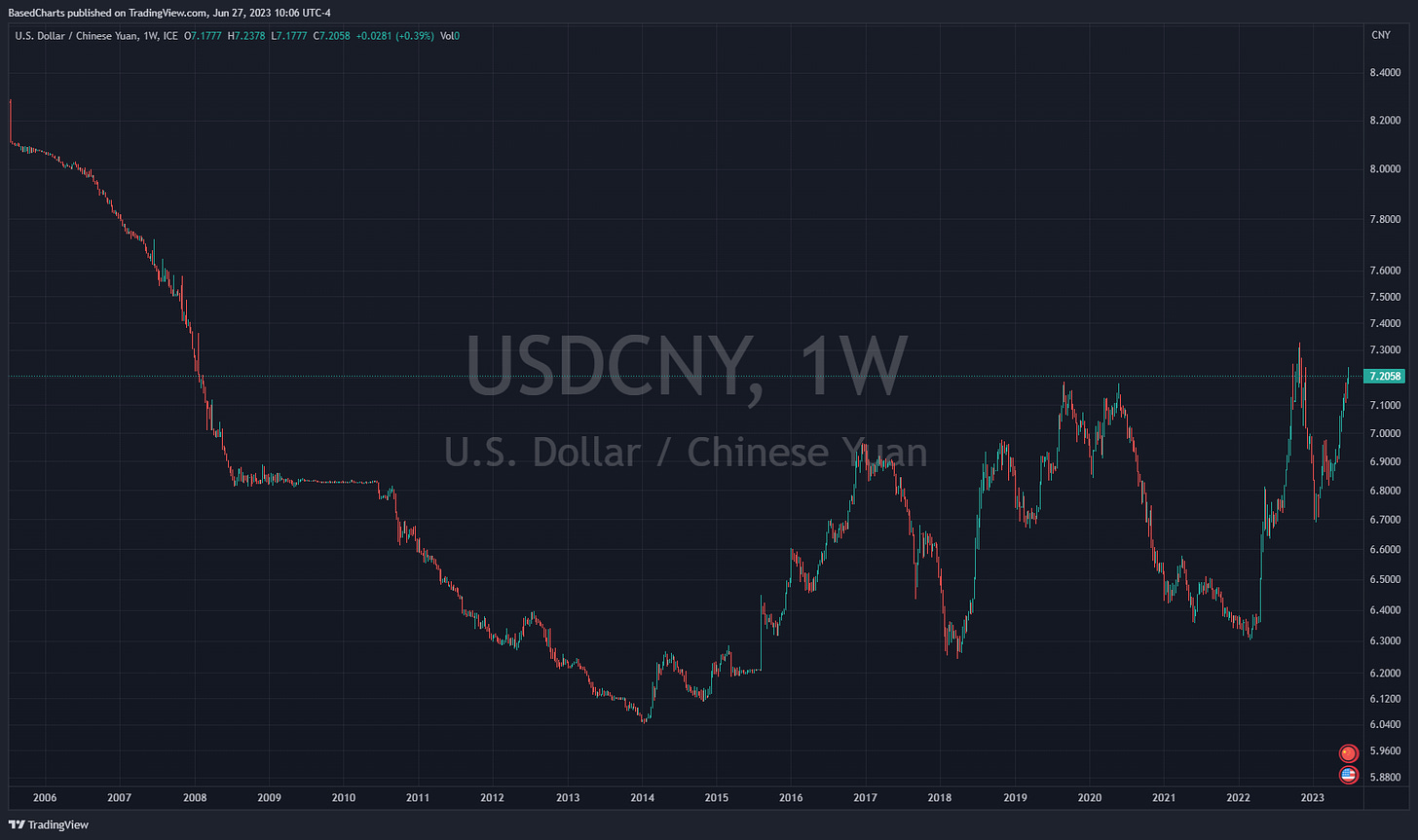
If USDCNY breaks out above 7.40, there’s no chart resistance until the old peg of 8.28 yuan per dollar.
